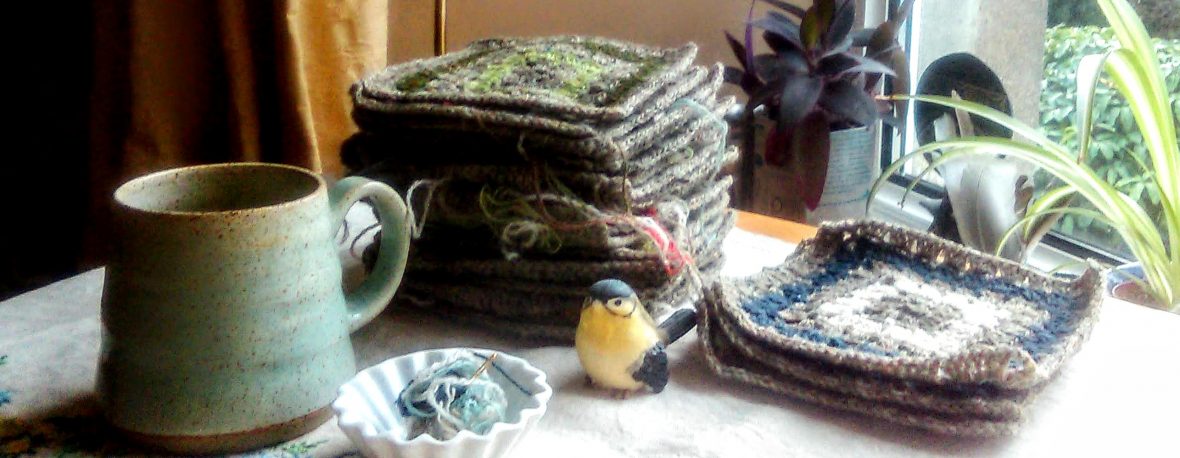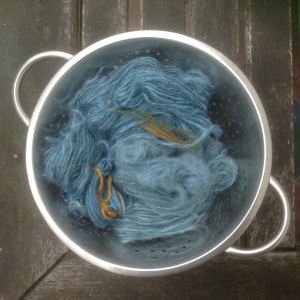Jamie Mills, who works at Archie Browns, a Health Food Shop, Vegetarian Cafe and Deli, asked me a while ago to show some of my recent work in the cafe.
With gratitude I accepted the kind offer and since July a show of photos and and a small installation (hand spun, plant dyed and hand knitted).
The photos are documentation of wool processes, from a visit at the Natural Fibre Company, Launceston, Bosigran Farm in Penwith, and my own processes of spinning and dying.
The exhibition is s glimpse into my art practise, where I am exploring wool as a sustainable material, natural and local resources and slow processes as a reflection and invitation to wellbeing.
The fibre, I used, came from the Natural Fibre Mills and is their carding waste.
Occasionally during in the carding processes something goes wrong, or there is a overlap between two carding lots, say Shetland and Wensleydale, (one could say its a mongrel) and the fibre can not be used for further processes.The shawl also does demonstrate my first adventure into dying with natural plant dyes, in this case onion skins, weld (yellow) and woad (blue).
Artist Statement
Wool is a living material, its connotations of clothing and keeping human mankind warm goes back to the beginning of humanity.
Wool provides the link, between our history and our presence, which I feel in my hands while engaging with a raw fleece, while quietly sitting watching how my hand spindle turns a cloud of something unformed into a form, a yarn.
The yarn becomes a symbol, it is the umbilical cord to the land, which feeds and clothes us.
The pieces, I created from this yarn become the witnesses of the time spend and an embodied holder the memory of this time: they invite reflection about our choices how we pass our time.
Wool becomes my companion in my daily enjoyment and engagement, the slow movement of a spindle, of a wooden needle grounds me, slows down time and lets my breath become slow and deep, guides me back into the presence. Wool speaks to people, brings back memories, asks to be touched, to be held and invites to use their hands and cherish the fruits of their hands, again.
Wool asks for tools and company, in such it becomes the vehicle to initiate collaborations with other artist, craftspeople and sometimes musicians.
Wool is my tool and aide to heal my own connection to the land and through my work and my invitations to others to share my vision and hope: fostering reflections towards a healed relationships with our environment, the one and only world we are living in.
50.263195
-5.051041
































































